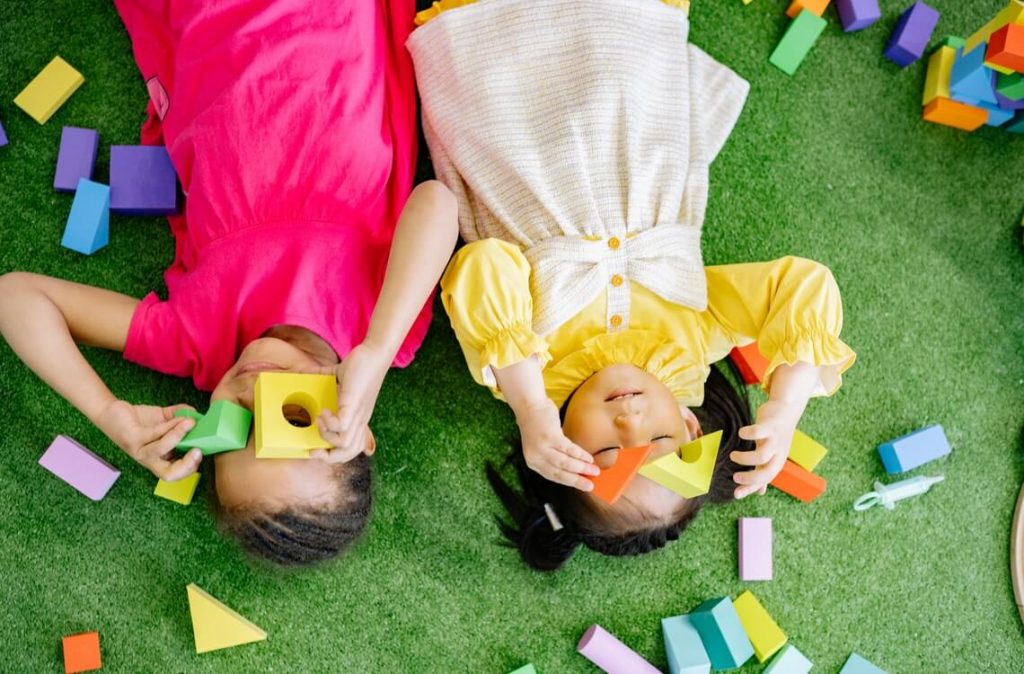“Play is the work of the child,” says Maria Montessori. And play, they should! What else is a child to do with themselves, right? Albert Einstein also once said that play is the highest form of research. So, let our children play away and reap the power of play!
While we may see play as a way to keep a child’s time occupied, play has a much bigger role in itself. It is a form of development necessary for a child. Lots of things happen during play, whether it’s structured or unstructured playtime.
Mildred Parten (an American sociologist and researcher) identified the six stages of play development. Learning what these stages are about helps us mummies learn about our child’s play and how it helps them in many ways.
Why Play Time Is Important and How Children Grow Through Play
In their pretend world of play, children pick up lots of skills that are essential to their real world. Through play, one of the most important things that children learn is about themselves. They learn about what they like and dislike, discover their interests and strengths.
They also learn to develop skills like problem-solving and decision-making, being adaptable and creative, and build social skills like learning to share, resolve conflicts, and how to fit in with others. As their play deepens, they also pick up language and communication skills, and other academic skills like math and science.
Playing is very much a building block towards self discovery and how all this fits in with the world around them. These are the six stages of play development defined by Mildred Parten and how each stage develops the child.
Learning Through The Six Stages of Play Development During The Formative Years
- Unoccupied Play – Birth to 3 months
- Solitary Play – Birth to 2 years
- Onlooker Play – 2 years
- Parallel Play – 2+ years
- Associative Play – 3 to 4 years
- Cooperative Play – 4+ years
Unoccupied Play
Babies learn to move their hands and legs at this stage, and even practice manipulating materials around them, grasping on to things and exploring in random manners. This is the beginning of play and sets the initial development towards the later stages of play.
Solitary Play
This is a stage where the child plays alone. They may not notice or acknowledge others around them, and may not be interested to play with others yet. In solitary play, the child learns to explore freely and master motor and cognitive skills. This is an important stage to prepare them for play with others.
Onlooker Play
Also known as Spectator Play, the active part of their play is observing or watching others in play, but do not join in. This is a normal part of play development, where they learn by watching others. As they watch and learn, they form many questions from their observations. They start to learn about social rules and relationships with others, too.
Parallel Play
This is the stage where a child plays alongside others, but not playing together just yet. They play in close proximity, with no interaction but paying attention to what they other is doing. They may mimic the other’s play, but they do not overlap nor engage with each other.
Associative Play
At this stage, a child starts to interact with others. Being side-by-side, they are still doing their own thing, with no common goals, but they talk and ask questions of the other. This is the onset of them learning how to understand and get along with each other.
Cooperative Play
Now the child actively plays with others and they share a common goal in their games. They collaborate and socialise with each other. At the initial stage, conflicts are common as they learn how to share, take turns, and learn to accept different opinions and ways of doing things.
Understanding Play Development Eases Mummies’ Concerns
Without understanding the stages of play, some of us mummies may worry about why our child is playing in isolation and whether that is a normal thing. We may be pushing for them to start playing with another child or siblings when they are not ready.
Once we have a better understanding of how they naturally progress from one stage to another, we now know that we can let them grow and play with the flow, the way it naturally progresses with each child.
More importantly, we let our child play and grow at their own pace. We can help them along with guided play as they progress, when the time is right to do so.
For more interesting stories and fun recipes, stay tuned to Motherhood Story!
